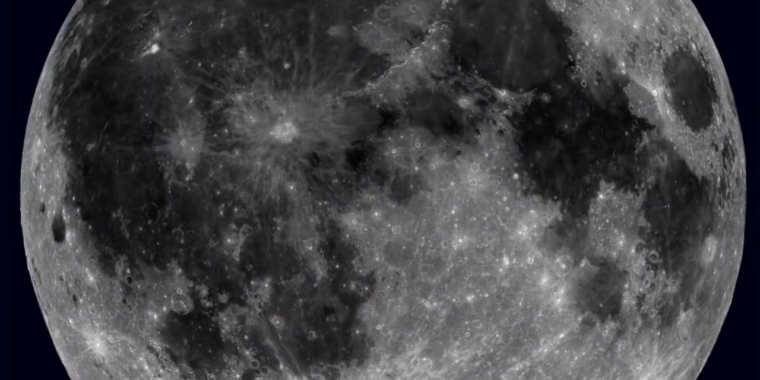Unveiling the Volcanic History of Our Moon
Our closest celestial neighbor, the Moon, has long captivated astronomers and scientists with its serene appearance. However, beneath its tranquil facade lies a tumultuous past marked by volcanic activity that shaped its surface in significant ways.
The Mystery of Titanium-Rich Volcanic Rocks
One of the enduring mysteries surrounding the Moon pertains to the distribution of titanium-rich volcanic rocks, such as ilmenite, which are found predominantly on the near side rather than the far side. Researchers at the Arizona Lunar and Planetary Laboratory have put forth a compelling hypothesis to elucidate this intriguing geological phenomenon.
It is believed that the Moon was once engulfed by a vast magma ocean, which solidified over time. Subsequently, a colossal impact on the far side of the Moon induced seismic disturbances that propagated to the near side, destabilizing the crust. This upheaval caused denser minerals on the surface to sink into the mantle, where they underwent melting and resurfaced through volcanic eruptions. Consequently, the near side of the Moon boasts a plethora of titanium-rich volcanic flows, effectively reshaping its topography.
The Enigmatic Procellarum KREEP Terrane
The focal point of this lunar enigma lies in the Procellarum KREEP Terrane (PKT), known for its high concentrations of potassium (K), rare earth elements (REE), phosphorus (P), and ilmenite-rich basalts. This region, replete with heat-producing elements, stands out as the most volcanically active area on the Moon.
According to a recent study published in Nature Geoscience, the unique geochemistry of the PKT region can be traced back to the Moon’s early stages of cooling from its magma ocean phase. The presence of radioactive uranium and thorium in KREEP further accentuates its geological significance.
Deciphering Gravitational Anomalies
To corroborate their hypothesis, researchers turned to data from the GRAIL mission, which unveiled intriguing gravitational anomalies beneath the lunar surface. These anomalies mirrored the pattern expected from sinking KREEP minerals, suggesting a plausible link between the geological processes and the observed gravitational irregularities.
Computer simulations confirmed that the sinking of KREEP minerals aligns with the gravitational anomalies detected by GRAIL, shedding light on the Moon’s ancient crustal dynamics. This finding underscores the profound impact of volcanic activity on the Moon’s evolution and geological diversity.
Unveiling the Moon’s Geological Past
By delving into the Moon’s volcanic history, researchers have gained valuable insights into its formative processes and the underlying mechanisms driving its geological evolution. The presence of ancient crustal remnants beneath the Moon’s surface offers a compelling glimpse into its tumultuous past.
With ongoing advancements in space exploration, particularly through the Artemis program, the prospect of uncovering more secrets buried within the Moon’s depths appears increasingly promising. By studying lunar samples firsthand, scientists aim to unravel the mysteries of our celestial companion and unveil the hidden chapters of its geological saga.
As the Moon continues to captivate our imagination, each new discovery brings us closer to deciphering its enigmatic origins and unraveling the complexities of its volcanic legacy.
Nature Geoscience, 2024. DOI: 10.1038/s41561-024-01408-2
Image/Photo credit: source url





